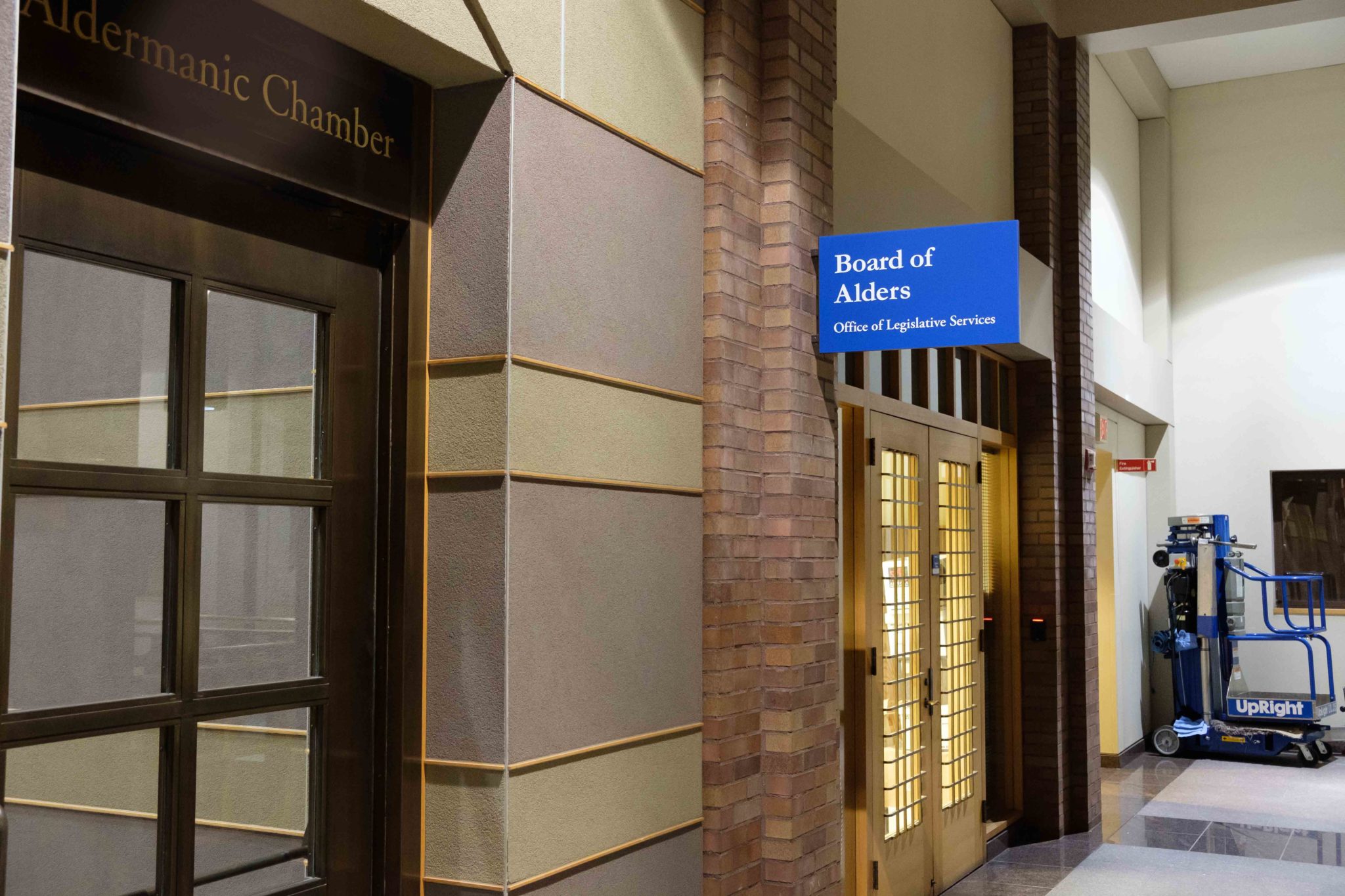
YaleNews
On Thursday evening, Yalies and longtime New Haven residents filled the aldermanic chambers at City Hall to its brim to discuss whether the University has fulfilled a yearslong commitment to hire 1,000 New Haven residents.
The Board of Alders’ Black and Hispanic Caucus held a four-hour public hearing on the state of Yale’s promise to the Elm City. In 2015, the University bowed to activist and union pressure to prioritize local employment and agreed to hire 1,000 New Haven residents — half of whom would come from designated local low-income neighborhoods, such as Dixwell, Fair Haven and Dwight — for full-time positions by April 2019. Now, just weeks before that deadline arrives, University representatives claimed that Yale has made good on its promise, while city leaders, activists and residents questioned the data that factored into the rosy outcomes it presented.
“Those aren’t actually real numbers,” Ward 22 Alder Jeanette Morrison said about the totals the University boasted. “In construction, jobs come and go … [they are not] continuous and full-time.”
The hearing began with a University presentation led by Vice President of Human Resources and Administration Janet Lindner on the progress made since the University signed the agreement four years ago. Lindner prepared a slideshow for attendees and claimed that the University had already fulfilled both prongs of the 1,000-job agreement.
Lindner’s numbers showed that the University had hired 2,591 total Elm City residents since 2015, as of last December. The agreement designates Dixwell, Dwight, Fair Haven, Hill, Newhallville, West River and West Rock as “neighborhoods of need” — and 627 of those new hires come from target low-income neighborhoods.
The University categorized these full-time hires into three general categories — staff, construction and faculty. Lindner stressed that, even excluding faculty hires, which are academic positions that often go to individuals with high levels of education and experience, the University hired 1,112 New Haven residents and 413 from neighborhoods of need in the last four years, putting it well within reach of its commitment.
But alders and community members disputed the relevance of a portion of the numbers. The alders — as well as Local 34 President Laurie Kennington ’01 and the Yale clerical and technical workers union — argued that certain roles should not count toward the original agreement.
The Alders raised concerns about the inclusion of construction jobs in the count, since the University itself does not directly hire any construction workers, but instead contracts all of its construction work. In the University presentation, the construction category was further broken down into two types of employees — apprentices and journeymen.
Yale tallied both types of construction hires into its totals. While the initial 2014 agreement includes the language of “apprentices” in the count, the alders and union leaders took issue with including journeymen. More than half the members of the Board of Alders were present, and all caucus members expressed skepticism about the inclusion of construction workers in the roundup.
In opposition to Yale, community members argued that the nature of construction work meant that even journeymen designated as “full-time” often struggle with high turnover and lack of long term stability. When in the middle of a University job, those individuals can expect to work and receive pay at the standard 40-hour-per-week level. However, they may only work for a matter of a few weeks or months and then sit idle — without paycheck — for months more between jobs.
Without journeymen in the count, due to lack of a guaranteed paycheck over a long-term agreement, the number of nonfaculty full-time hires from neighborhoods of need — which Yale claims is 413 — falls to 267. Just weeks before April arrives, this number puts the University just past halfway on its promise of 500.
After the University, Kennington and Melissa Mason, executive director of New Haven Works — a nonprofit partner in the hiring agreement — presented to the Board of Alders, the floor opened to the public. For hours, community members lined up to speak about their experiences the University and its hiring practices.
“Tonight’s hearing further underscores the deep mistrust that exists between the community and Yale,” Justin Elicker FES ’10 SOM ’10, who is running to unseat Mayor Toni Harp for the city’s top office, told the News. “This mistrust comes from a history of Yale willing to be a good neighbor only when pressured rather than through its own initiative. … Yale needs to take a proactive role in addressing the systemic inequalities, racism and injustice in the community it calls home.”
Yale representatives and city residents alike stressed their commitment to furthering Yale-New Haven relations moving forward, regardless of how the numbers count in the goal tally.
University spokesman Tom Conroy told the News that Yale is not going to stop its effort to support the people of New Haven. Conroy emphasized that Yale has a strong partnership with the city’s local unions and New Haven Works.
“Disagreement of progress to date would matter more if the connection [between Yale and New Haven] would end, but it won’t.”
A third of Yale’s external hires since the agreement was signed have been residents of New Haven.
Angela Xiao | angela.xiao@yale.edu
Skakel McCooey | skakel.mccooey@yale.edu







